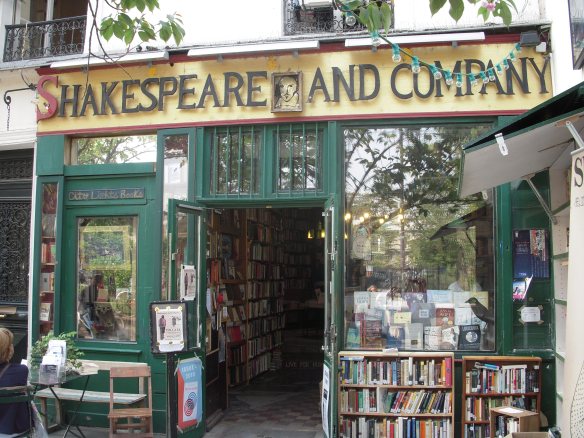When you walk the streets of Paris you just never know what you’re going to stumble onto next. Back in November, I was walking in the Malesherbes neighborhood on my way to Galleries Lafayette and I passed a pretty little square, so I went in and sat down to read for awhile. It was only later that I realized what kind of history I had stumbled into.
I’d been sitting on top of a mass grave dating back to the French Revolution.
Square Louis XVI was a cemetery for the nearby Madeleine church back in the 18th century. King Louis XVI and Marie Antoinette were buried here after their execution by guilloutine at Place de la Concorde. They were buried in a mass grave along with about 3,000 other victims of the French Revolution. Twenty-one years later, King Louis XVIII exhumed their bodies and moved them to the Bascillica of St. Denis for a proper royal burial.
There is some debate whether the King and Queen’s bodies were properly identified when they were exhumed. There is some evidence that the King and Queen’s bodies were the only bodies actually placed in coffins, or that their burial places were marked with trees and hedges. However, some claim that their bodies, like all of the others, had been covered with quicklime, so that their remains would have been too decomposed to identify some twenty years later. Enjoy some of the debate and discussion at author Catherine Delor’s blog. Either way it’s pretty creepy.

Louis XVIII built the Chapelle Expiatoire in the square to commemorate the first burial place of the royals. I didn’t go in the chapel (it’s only open Thursday-Saturday afternoons), but for some great photos and more information about the sculptures and a crypt inside, go to Travel with Terry’s Paris blog. The crypt contains a black coffin that supposedly marks the original site of the King and Queen’s burial plot.
If you know me, you know that’s all I needed to get inspired to do some reading about the French Revolution. I highly recommend Madame Tussaud by Michelle Moran (Broadway, 2011, now available in paperback), which I hear is going to be turned into a television miniseries by the same folks that brought us The Tudors. Count me in for that – the book was fascinating. Gruesome, but in a good way – did you know Madame Tussaud was compelled to make death masks of the key players of the French revolution? Ewww.
I need to add Mistress of the Revolution (NAL 2009) by Catherine Delors to my reading list now too. Check out Delors’ blog post called “La Chapelle Expoatoire, and Marie-Antoinette’s smile” to learn about the connection between Square Louis XVI and her book.
Oh-oh, I can tell I’m going to get on another one of my “reading rolls.” Please leave some comments and let me know what French Revolution era books you recommend, whether fiction or nonfiction.
With thanks to Travel with Terry’s blog, here are the details you will need to visit the Chapel inside Square Louis XVI:
Chapelle Expiatoire
29, rue Pasquier – Square Louis XVI
Open Thursdays, Fridays & Saturdays 1-5 pm; entrance fee 5 Euros (free to holders of the Paris Museum Pass)
Closed January 1, May 1, November 1, November 11, December 25.
http://chapelle-expiatoire.monuments-nationaux.fr/en/
Métro: St-Augustin






























You must be logged in to post a comment.